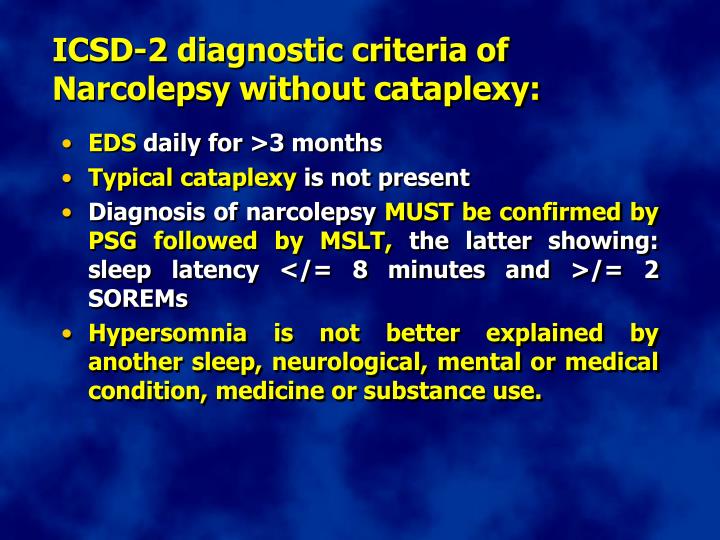
A seizure is a condition of the brain that can cause mild to severe symptoms.

The brain’s central nervous system is responsible for regulating sleep, and because of a disorder of the central nervous system, excessive daytime sleepiness occurs frequently followed by periods of overwhelming sleepiness and then sudden, intense sleep. Medication and lifestyle changes can be beneficial in helping to manage it. If someone believes they have this condition or has symptoms that make it difficult to walk, they should consult a doctor. Because of its sleepiness, it is common for people to be sleepy throughout the day. The neurological condition is known as schizophrenia and can have a significant impact on many aspects of our daily lives. A polysomnogram (PSG) and multiple sleep latency tests (MSLT) may be recommended for those who sleep more than 6 hours per night. A doctor will look into a person’s symptoms as well as the drugs they take during a visit. A person with type 2 of narcolepsy does not experience cataplexy and has normal hypocretin levels. They may experience brief sleepiness, but there are no signs of muscle fatigue. However, the symptoms are uncommon in people with Type 2. When people with type 1 experience cataplexy, a partial body becomes limp. Narcolepsy is classified into two types: type 1 and type 2. They are frequently less severe and have normal levels of the brain hormone hypocretin, which is found in all forms. Individuals with this condition typically experience excessive daytime sleepiness but do not suffer from muscle weakness as a result of emotional stress. (Contagious narciprocal disorder without cataplexy) Previously, this disease was classified as type 2. When diagnosing narcolepsy, doctors must consider the possibility of co-existing conditions in order to provide the most appropriate treatment options. Furthermore, the study found that patients with narcolepsy are more likely to be suffering from other medical conditions, such as depression and open- heart surgery, which makes their care more difficult. Misdiagnoses from this study may cause significant delays in treatment and may pose a significant risk of harm to the patients. The lack of a proper diagnosis is a serious issue that can result in missed opportunities for treatment as well as increased health complications. Depression (31%), insomnia (18%), and obstructive sleep apnea (OSA) were the three most common misdiagnosed conditions. It is critical for employees to communicate with their employers about sleep disorders in order to find solutions to their accommodations.Ī physician survey and retrospective chart review discovered that 60% of patients with narcolepsy were misdiagnosed as having another disorder at first. A person who has not received proper care is more likely to be involved in a severe automobile accident. In the field of allergy and sleep medicine, ICD-10 codes, CPT codes, and HCPCS codes are used to report narcolepsy to health insurers in order to report it on medical claims. Several diagnostic tests, such as polysomnography (PSG) and multiple sleep latency tests (MSLT), can be used to diagnose narcolepsy. Excessive daytime sleepiness, a sudden loss of muscle tone (cataplexy), sleep paralysis, changes in rapid eye movement (REM) sleep, hallucinations, and a lack of sleep are the most common symptoms of this disorder. Medical billing and coding companies can assist doctors in reporting this chronic sleep disorder in a manner that is accurate and up to date.

Excessive daytime sleepiness, sleep paralysis, overwhelming daytime drowsiness, hallucinations, and episodes of cataplexy (partial or total muscle control loss, often triggered by strong emotions such as laughter) are all characteristics of this disorder. Narcolepsy, a long-term neurological disorder, affects the brain’s ability to regulate sleep-wake cycles. G47 for Narcolepsy without cataplexy is a new ICD-10 code. It contains a variety of related symptoms, including attention deficit hyperactivity disorder. One of these disorders is attention deficit hyperactivity disorder, but it is one of the others. Narcolepsy DSM-5 348.00 (ICD-10-CM Multiple Codes) is one of the DSM-5 medications. Can I bill/code to a provider as a solo act even if that provider has been on record for more than one month?
#Narcolepsy without cataplexy icd 10 Patch
The patch code (62273) was entered into the anesthesia record by the Muscular Dystrophy Association. A patient received a blood patch as part of their anesthesia procedure. I’m looking for a qualified colleague, as well as opinions and official guidance as possible. Narcolepsy can also cause sleep paralysis, which is a temporary paralysis of the body that occurs when a person is falling asleep or waking up. It is characterized by excessive daytime sleepiness and sudden, brief periods of sleep during the day. Narcolepsy is a neurological disorder that affects a person’s ability to wakefulness and sleep.


 0 kommentar(er)
0 kommentar(er)
